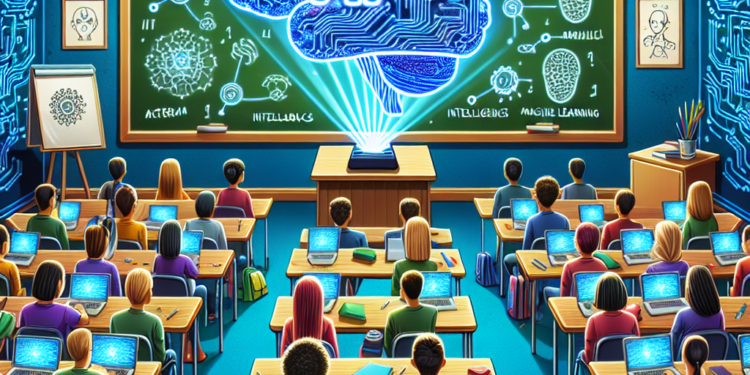Artificial Intelligence, or AI, is a rapidly growing field that has the potential to revolutionize the way we live and work. From self-driving cars to personal assistants like Siri and Alexa, AI technology is becoming increasingly integrated into our daily lives. But for those who are new to the world of AI, it can be overwhelming to understand where to start. That’s why we’ve put together this beginner’s guide to AI basics, to help you navigate this exciting field and learn about its core concepts.
What is Artificial Intelligence?
Artificial Intelligence is a branch of computer science that focuses on creating intelligent machines that can perform tasks that typically require human intelligence. These tasks include things like recognizing speech, interpreting data, making decisions, and solving problems. AI systems are designed to mimic human cognitive functions like learning, reasoning, problem-solving, perception, and language understanding.
Types of Artificial Intelligence
There are two main types of AI: narrow or weak AI, and general or strong AI. Narrow AI is designed to perform specific tasks, such as playing chess or recommending movies on Netflix. This type of AI is limited to the tasks it was designed for and cannot perform tasks outside of its programmed capabilities.
On the other hand, general AI is designed to understand and learn any intellectual task that a human being can do. General AI has not yet been achieved and is still a subject of ongoing research and development. The goal of general AI is to create machines that are capable of thinking, reasoning, and problem-solving like a human.
Machine Learning
Machine learning is a subset of AI that focuses on building systems that can automatically learn and improve from experience without being explicitly programmed. Machine learning algorithms use data to train models that can make predictions or decisions based on that data. This allows AI systems to improve their performance over time as they are exposed to more data.
There are three main types of machine learning algorithms: supervised learning, unsupervised learning, and reinforcement learning. In supervised learning, the algorithm is trained on labeled data, where the correct answers are provided. In unsupervised learning, the algorithm learns from unlabeled data, finding patterns and relationships on its own. In reinforcement learning, the algorithm learns through trial and error, receiving feedback on its actions and adjusting its behavior accordingly.
Deep Learning
Deep learning is a subset of machine learning that uses neural networks to learn from data. Neural networks are a set of algorithms that are inspired by the structure and function of the human brain. They are composed of layers of interconnected nodes that process and transmit information.
Deep learning has become a popular approach in AI due to its ability to automatically learn features from data. This means that neural networks can learn to recognize patterns and relationships in data without being explicitly programmed to do so. Deep learning has been instrumental in many AI breakthroughs, such as image and speech recognition, natural language processing, and playing complex games like Go.
Applications of Artificial Intelligence
AI has a wide range of applications in various industries, including healthcare, finance, transportation, e-commerce, and entertainment. In healthcare, AI is being used to diagnose diseases, personalize treatment plans, and predict patient outcomes. In finance, AI is used for fraud detection, risk assessment, and algorithmic trading. In transportation, AI powers self-driving cars, route optimization, and traffic management systems.
AI is also being used in e-commerce for personalized recommendations, customer service chatbots, and fraud prevention. In entertainment, AI is used to create video games, recommend movies and music, and generate realistic animations.
Ethical Considerations
As AI technology continues to advance, there are important ethical considerations that need to be addressed. One of the main concerns with AI is bias, as algorithms can inadvertently reflect the biases of their creators or the data they are trained on. This can lead to discriminatory outcomes in areas like hiring, lending, and criminal justice.
Another ethical consideration is privacy, as AI systems often require access to large amounts of data in order to function. This raises questions about how that data is collected, stored, and used, and whether individuals have control over their own personal information.
There are also concerns about the impact of AI on jobs and the economy, as automation could displace workers in certain industries. This raises questions about how to reskill and retrain workers for the jobs of the future.
Getting Started with AI
If you’re interested in learning more about AI, there are plenty of resources available to help you get started. Online courses like Coursera, Udacity, and edX offer introductory courses in AI and machine learning that are accessible to beginners. There are also books like “Artificial Intelligence: A Modern Approach” by Stuart Russell and Peter Norvig that provide a comprehensive introduction to AI concepts.
Practical experience is also crucial for learning AI, so consider working on projects or participating in hackathons to apply your knowledge in a hands-on setting. You can also join AI communities like Kaggle, GitHub, or AI Meetup groups to connect with other enthusiasts and professionals in the field.
Conclusion
Artificial Intelligence is a rapidly evolving field with the potential to transform industries and improve our quality of life. By understanding the basics of AI, including its core concepts, types, applications, and ethical considerations, you can begin to explore the exciting possibilities that AI has to offer. Whether you’re a student, a professional, or simply curious about AI, there are plenty of resources available to help you get started on your AI journey. With the right knowledge, skills, and mindset, you can become a part of the growing community of AI enthusiasts and help shape the future of this exciting field.













